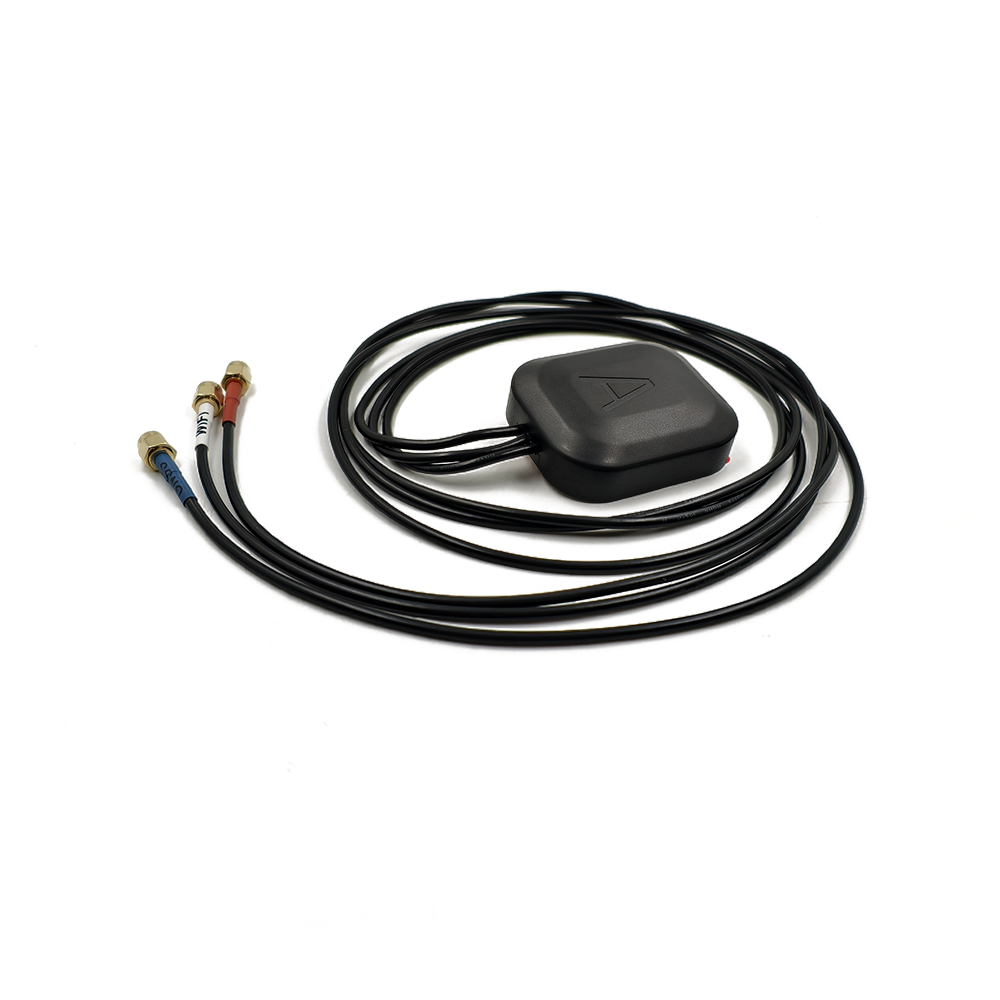Applications
High accuracy multi - frequency GNSS antennas have a wide range of applications across multiple industries. In the surveying and mapping industry, they are used for land surveying, topographic mapping, and cadastral mapping. Surveyors rely on these antennas to measure positions with high precision, which is essential for creating accurate maps, determining property boundaries, and monitoring land deformation over time. The high - accuracy positioning provided by multi - frequency antennas allows for more detailed and reliable mapping data.
In the automotive industry, especially in the development of autonomous driving systems, multi - frequency GNSS antennas play a crucial role. They enable vehicles to accurately determine their position on the road, which is necessary for features such as lane - keeping assist, adaptive cruise control, and autonomous navigation. The ability to provide high - accuracy positioning even in urban environments with tall buildings and complex road networks is essential for the safe and reliable operation of autonomous vehicles.
In the aerospace industry, these antennas are used for aircraft navigation, approach guidance, and satellite tracking. They help pilots determine the aircraft's position accurately, especially during critical phases such as takeoff and landing. For satellite tracking, multi - frequency antennas provide the precise positioning data needed to monitor and control satellites in orbit.
In the IoT sector, multi - frequency GNSS antennas are used in a variety of applications, such as asset tracking, smart city infrastructure, and environmental monitoring. In asset tracking, they enable real - time tracking of valuable assets such as containers, vehicles, and equipment. In smart cities, they contribute to intelligent transportation systems, traffic management, and public safety applications. In environmental monitoring, they can be used to track the movement of environmental sensors and monitor changes in the environment with high precision.
Future Trends
Looking ahead, several future trends are expected to shape the development of high accuracy multi - frequency GNSS antennas. One trend is the further miniaturization of these antennas. As technology advances, new materials and manufacturing techniques, such as nanotechnology and 3D printing, will be explored to reduce the size and weight of multi - frequency antennas without sacrificing performance. This miniaturization will enable their integration into a wider range of devices, including smaller IoT sensors, wearable devices, and micro - drones.
The integration of artificial intelligence (AI) and machine learning (ML) algorithms with multi - frequency GNSS antennas is an emerging trend. AI and ML can be used to optimize the performance of the antennas in real - time. These algorithms can analyze the received signals, detect changes in the signal environment, and adjust the antenna's operation parameters, such as gain, filtering, and interference mitigation, to adapt to different conditions. For example, AI can be used to predict and mitigate the effects of ionospheric disturbances or multipath interference, further enhancing the accuracy and reliability of the positioning system.
Advancements in communication technologies will also impact multi - frequency GNSS antennas. The development of 5G and other high - speed, low - latency communication networks will enable faster and more reliable transmission of GNSS correction data. This will improve the overall performance of the positioning system, allowing for even more accurate positioning. Multi - frequency antennas will need to be designed to take full advantage of these new communication technologies.
There is also a growing trend towards the development of multi - functional antennas. Future multi - frequency GNSS antennas may integrate additional functions, such as wireless communication capabilities, sensor integration, or energy harvesting. This integration will reduce the number of antennas required on a device, saving space and potentially reducing costs.
Conclusion
In conclusion, high accuracy multi - frequency GNSS antennas have revolutionized the field of positioning technology. Their ability to receive signals from multiple frequency bands and multiple GNSS constellations has significantly enhanced positioning accuracy, reliability, and the ability to operate in challenging environments. These antennas have found widespread applications across various industries, from surveying and automotive to aerospace and IoT, driving technological advancements and improving the efficiency and safety of numerous processes.
However, challenges such as design complexity, power consumption, and interference management still need to be addressed. Overcoming these challenges will require continuous innovation in design, materials, manufacturing processes, and signal processing techniques.
As the demand for precise positioning continues to grow in an increasingly connected world, the future of high accuracy multi - frequency GNSS antennas looks promising. With trends such as miniaturization, the integration of AI and ML, advancements in communication technologies, and the development of multi - functional antennas, these antennas will continue to evolve and play an even more significant role in shaping the future of positioning - based technologies. They will contribute to the development of more intelligent, efficient, and reliable systems across a wide range of applications, enabling a new era of technological progress and innovation.




































































 Language
Language
 En
En Cn
Cn Korean
Korean

 Home >
Home > 








 18665803017 (Macro)
18665803017 (Macro)













